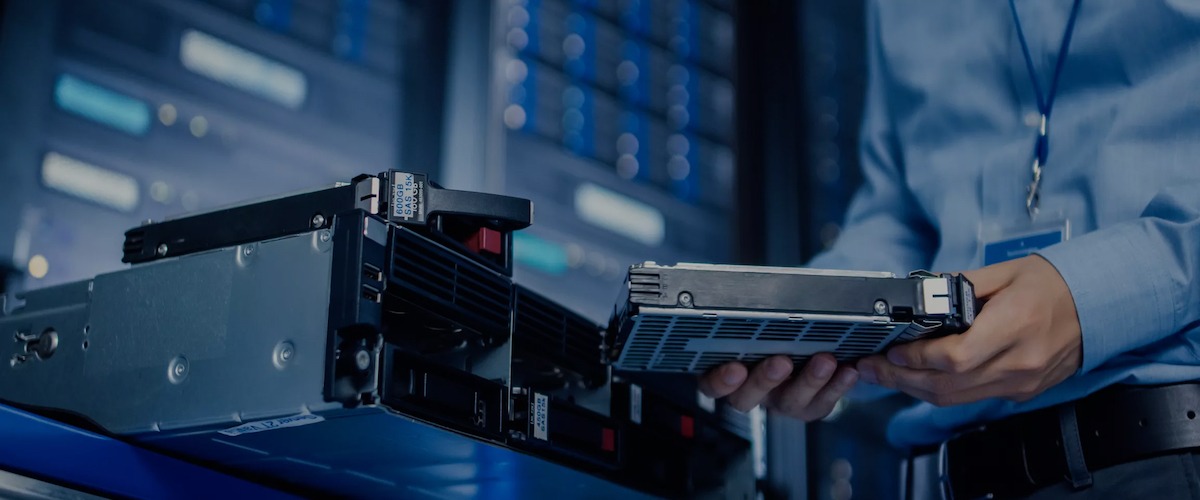HDD over NVMe-oF enables organizations move to NVMe (nonvolatile memory express) over fabric (NVMe-oF) architectures, without struggling with how to leverage hard disk drives (HDD) as part of the transition. Vendors present the NVMe-oF infrastructure as an architecture exclusively for All-Flash Arrays, but organizations know that hard disk drives are 10X less expensive than flash drives and want to integrate them into the new infrastructure. The challenge that IT faces is how to integrate the two technologies without having to support two different architectures. Two infrastructures are more expensive and more challenging to manage, which always leads to additional storage silos.
Why NVMe-oF?
The primary advantage of NVMe-oF is a significant reduction in storage network latency. A properly configured NVMe-oF network should deliver storage response times similar to internal, non-networked storage, eliminating the last objection to shared storage.
Another advantage of NVMe-oF is its potential to consolidate infrastructure. Today, NVMe-oF can run over Fibre Channel (FC) and Ethernet (TCP and RDMA).
Particularly interesting is the TCP variant of NVMe-oF. While it is not as latency-free as RDMA Ethernet, it does offer lower latency than the typical iSCSI network. NVMe-oF TCP can work on existing Ethernet infrastructures, which means a much easier transition process and significantly lower transition cost.
Why HDD over NVMe-oF?
Since the focus of NVMe-oF is low latency, it seems a perfect fit for flash and a very odd fit for HDD. So why is attaching HDD a consistent request from customers transitioning to NVMe-oF? There are four primary reasons for the HDD over NVMe-oF requirement:
- Customers are aware of HDD’s price advantage. A 15TB flash drive costs about $3,500. A 16 TB HDD costs about $250. That is over a 10X price savings and is simply too good to pass up despite the performance advantage of flash.
- IT professionals are aware that typically 90% of their data has not been accessed in over 90 days. Keeping this static data on premium-priced flash doesn’t make financial sense.
- Customers want to avoid maintaining and supporting separate infrastructures and storage systems.
- IT professionals don’t want to deal with the management nightmare of manually moving data between those systems and across those infrastructures. If IT tries to automate the process, they will find that the data management software costs almost as much as the storage it will manage.
The problem is that most storage vendors deliver an NVMe-only system that can’t simultaneously support connections to the legacy storage infrastructure or support Serial Attached SCSI (SAS) HDDs. As a result, IT professionals often assume they have no choice and must use a large and expensive all-flash array as part of their transition cost to NVMe-oF. These additional costs and complications are delaying the adoption of NVMe-oF.
HDD over NVMe-oF Critical to Adoption
To make NVMe-oF practical, storage vendors must provide organizations with a way to support HDD within the same infrastructure. However, the support of HDD should not come at the expense of performance by adding additional latency. HDD over NVMe-oF should also not require customers to purchase proprietary and unproven storage enclosures.
Instead, the storage solution should act as a multi-protocol storage router, seamlessly integrating NVMe flash and standard HDDs in SAS enclosures within a single storage component. The solution should also automatically move old data from the NVMe flash tier to the HDD tier saving IT the management cycles of doing it themselves or the cost of buying an automated data management solution. Hybrid storage, with a modern auto-tiering algorithm can deliver predictable consistent performance to every data center making it the future of enterprise storage.
Pain-free Migration to NVMe-oF
The storage solution should leverage its ability to simultaneously support multiple storage protocols and storage media types to create a seamless path to the NVMe-oF infrastructure. You also have to make sure your applications can take advantage of the low latency. The storage solution’s flexibility enables a gradual transition to NVMe-oF at a pace that IT is comfortable with without a painful data migration phase. They can maintain their legacy infrastructure until it reaches its end of life or uses NVMe-oF TCP to transition more quickly without having to recreate volumes or buy new storage media.
Conclusion
NVMe-oF is an infrastructure with many potential benefits, the most prominent being improved application response time, thanks to its low latency. The consideration for IT is if the performance improvement is worth the process of implementing the new infrastructure. The key to success is, surprisingly, not the storage hardware. Instead, IT needs to focus on adopting the right storage software that has the flexibility to support your current environment while guiding them to an NVMe-oF future.
StorONE is unique in the storage industry because it can simultaneously support multiple protocols from a single storage engine. Each volume is abstracted not only from the physical storage hardware but also the network hardware. This abstraction means the customers can mix different media types and capacities within the same volume and switch from a storage protocol like Fibre Channel or ISCSI to NVMe-oF (TCP or RDMA) and continue to use the same volume. And, of course with StorONE’s Storage Engine you benefit from the fastest RAID rebuilds in the industry!
To learn more about NVMe-oF and how to create a migration strategy, please join StorONE for our live webinar “The NVMe-oF Readiness Workshop” on June 28th at 11:15 am ET / 8:15 am PT.




